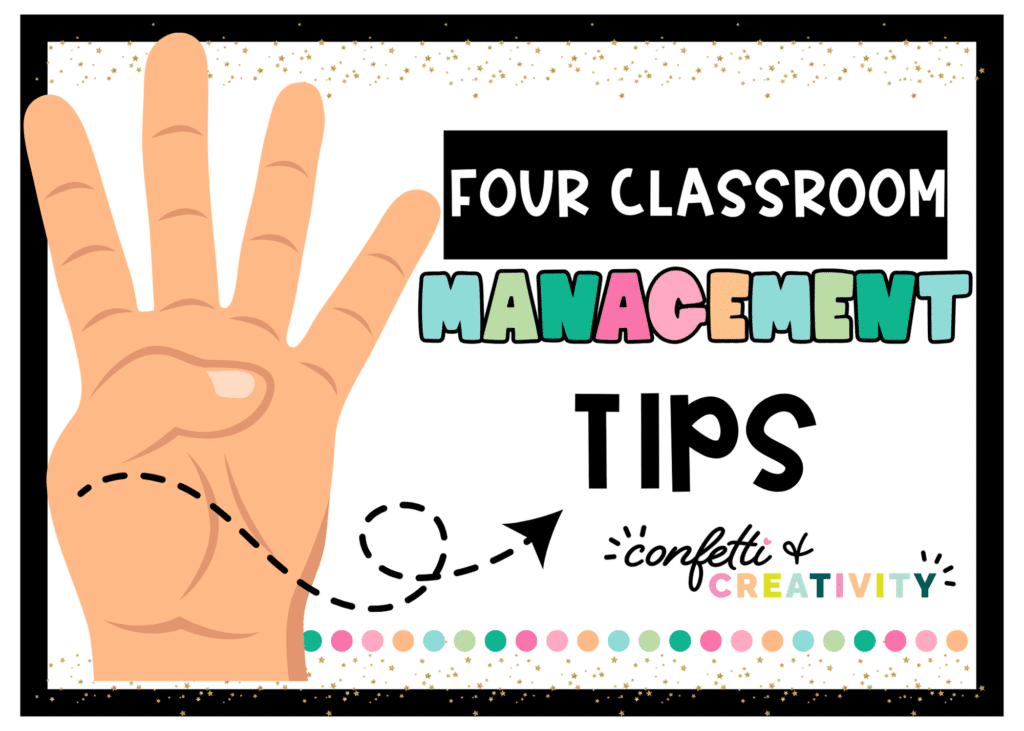
Congratulations!! You have landed your first job as a teacher! You have set up your classroom, reviewed your curriculum and standards, and are planning your first few weeks. Then you might start to panic: what do I do with a classroom full of kids!?
My best advice for a first-year teacher is to spend time creating a classroom management plan!
An effective classroom management plan is one of the most important things a teacher can create. Having a plan helps students know the expectations so they can stay organized and focused all day long. Putting in the work early for a classroom management plan will pay dividends all year long, so even though you want to jump directly to teaching, you’ll drive yourself crazy without a plan that provides the structure for learning to thrive!
Without further ado, here are four easy to implement tips to give you an amazing first year of teaching!
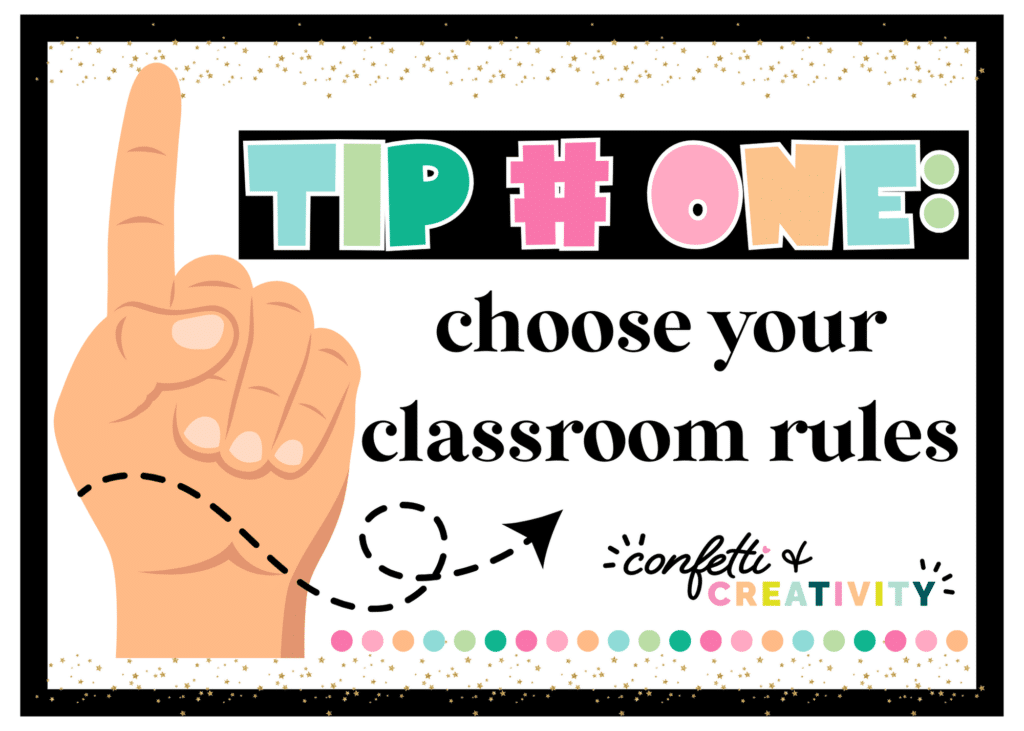
My first tip for a first-year teacher is to create a classroom management plan where you teach your students your rules and procedures. Many teachers have different approaches to how they want to create rules in their classrooms. Some like to make the rules together as a class, and others develop them before the school year starts. – choose a method that you feel comfortable with!
My classroom rules last year were inspired by Whole Brain Teaching and some teachers I followed on Instagram:
Regardless of your approach, you must explicitly teach, model, and review your rules at the beginning of the year and all year long. Every set of classroom rules will be different, but here are some tips to develop your first set of classroom rules:
Using a hand gesture or motion to go along with the rule is beneficial to help students remember it. It will allow students to memorize the rule, and you can also make the motion to a student as a quick and easy redirection. This will save you so much time!
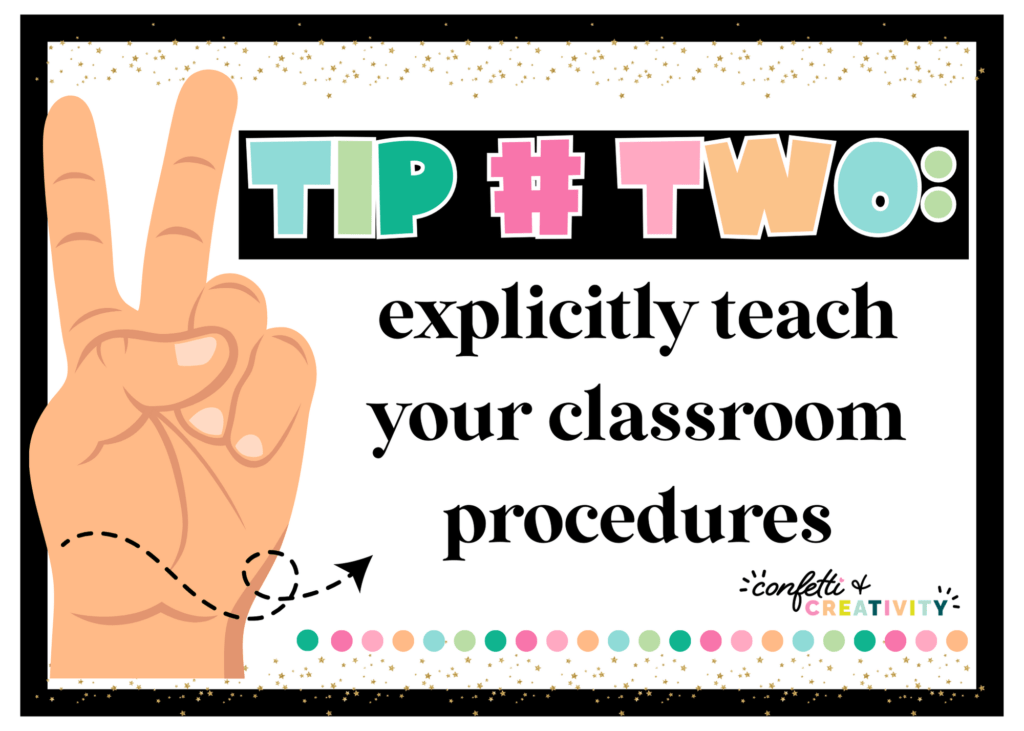
Besides going over your rules, you will want to teach your procedures. Your rules and procedures will be the back bone of your classroom management plan! In my first year of teaching, I did not teach my students my expectations for each procedure, which became a real headache throughout the year! It’s always easier to adapt by easing up than trying to crack down, so be consistent early on!
You will want to introduce a specific procedure whenever your students move or complete a task. Here are some questions to ask when you’re thinking through procedures to implement for your classroom:
If you do not have a procedure for these little tasks, you will be amazed at how it can derail the day. Discuss why the procedures and rules are important and must be followed. When students understand the purpose of the rule or procedure, they will respect it more, and will eventually even hold each other accountable.
Also, remember to enforce your rules and procedures, and hold students accountable when they are not following through on what is expected of them. Create a system for redirections and consequences when rules and procedures are not being followed.
If you notice many students in your class are not following your expectations, stop what you are doing and model! When in doubt, model it out! Have students try again and again until they are doing EXACTLY what you want! I’ve found that sometimes students want to do the right thing but can be forgetful so being overly explicit is very helpful!
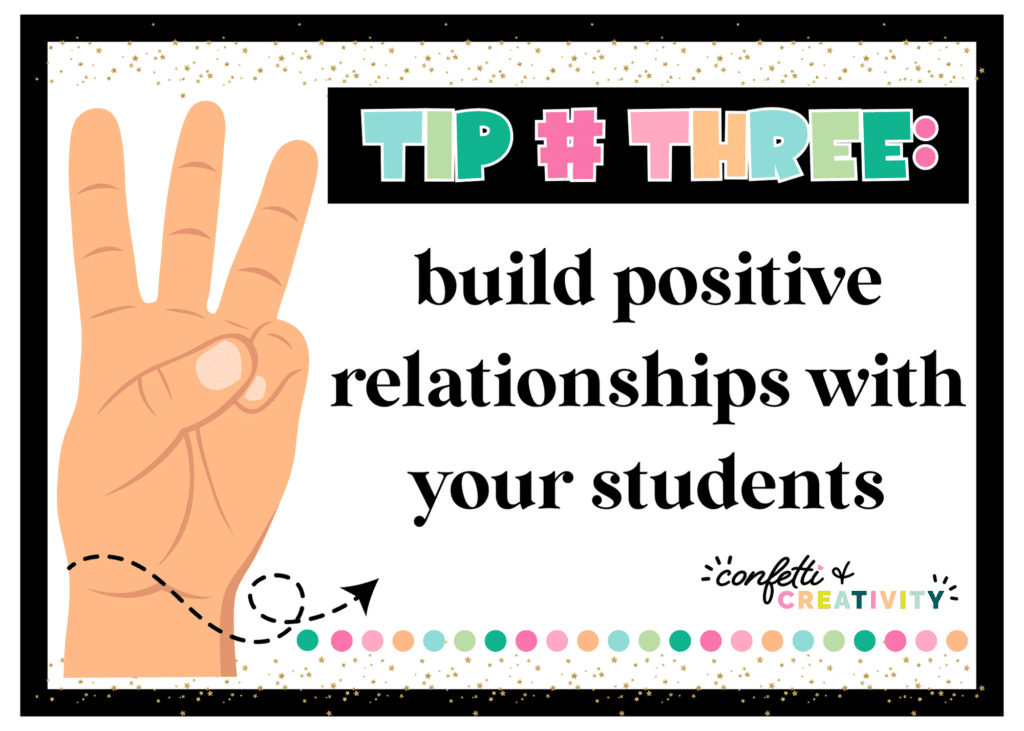
One of the most important things you can do as a first year teacher is to work hard on building positive relationships with your students. You want your students to trust you and know you will always be there for them. Rules and expectations are fully reliant on the relationship you have with your students!
To help build positive relationships, spend time getting to know their interests, families, and strengths. Here are a couple of ways that I’ve found it easy to make relationships natural:
What I’ve found is that having these great relationships with students doesn’t just make them feel loved, it makes teaching so much more fun! Students often perform better and will “buy” into your classroom community when they feel their teacher cares about them.
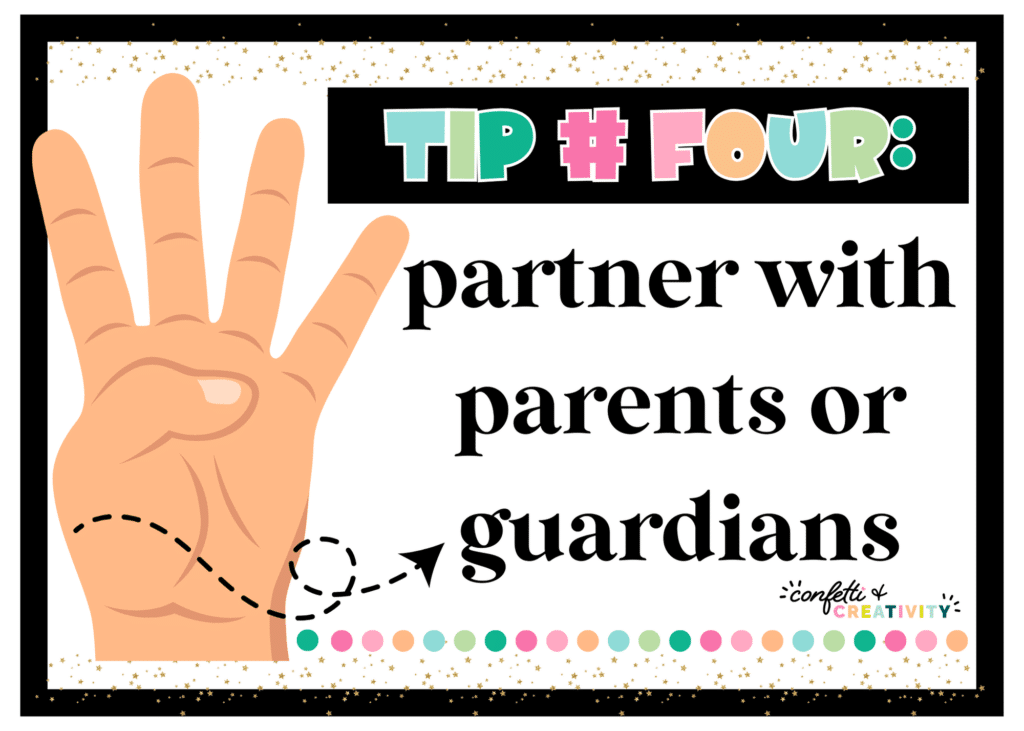
Building strong relationships with your students’ parents or guardians is a great way to set your classroom up for success. You want them to know that you and them are on a team! You both want their child to grow and have a successful school year, but you have to express that immediately at the start of the school year.
One thing that I always find beneficial in the long run is calling my students’ parents the first week of school. It seems like a lot of work, and what could you talk to parents about already? But I cannot tell you how this helped shape my relationships with my students’ families!
I called to express how I have loved getting to know their child, talk about what I have seen them doing well this first week, and end it with if they have any questions. It will set a positive tone for the whole year!!
The most important part is if you have to make a tough phone call home about behavior, academic struggles, or a situation that came up, the first time you talk isn’t in a “negative” way. Having positive interactions helps the parent know that you’re on the same team and that you truly want what’s best for their child.
I also suggest coming up with a weekly or monthly form of communication. I always did a newsletter for my families where I outlined what we were learning, any news or announcements, and added a class photo. You can also write a positive note home each week to acknowledge the amazing things you see your students doing!
Communication with parents is critical in helping foster a positive relationship – don’t overthink it or let it overwhelm, but think of a way that’s natural for your teaching style to build relationships. To make it easier, checkout some of my Classroom Newsletters or Meet the Teacher Templates.
Let me know in the comments below what you’re most excited for with your first year teaching and if you have any questions!